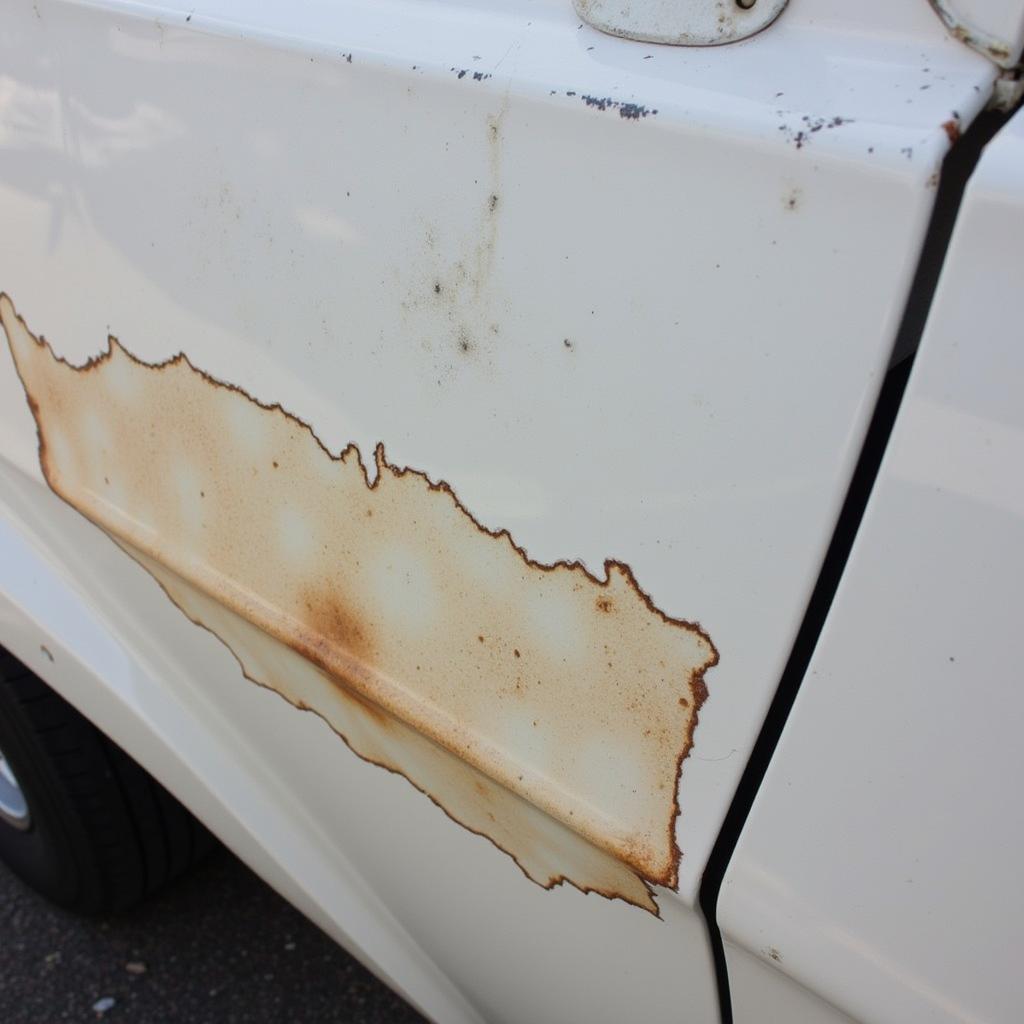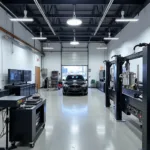A perfect paint job can transform a car, but what causes paint job to fail prematurely? Many factors can contribute to a less-than-perfect finish, from improper preparation to environmental factors. Understanding these culprits can help you avoid costly repaints and keep your car looking its best. Let’s dive into the common causes of paint job failures and how to prevent them.
Common Culprits Behind Paint Job Failures
Several factors can contribute to a paint job failing, ranging from poor preparation to harsh weather conditions. Recognizing these issues is crucial for maintaining a vibrant and long-lasting car finish.
Improper Surface Preparation: The Foundation of a Flawless Finish
Perhaps the most common reason for paint failure is inadequate surface preparation. This includes neglecting to remove rust, old paint, or contaminants like grease and dirt. These imperfections create a weak base for the new paint, leading to bubbling, peeling, and chipping. Thorough sanding, cleaning, and priming are essential for a smooth and durable finish.
Rust, in particular, is a paint job’s worst enemy. It spreads beneath the surface, causing the paint to lift and flake. Before painting, it’s crucial to remove all rust and treat the affected area with a rust converter to prevent future corrosion.
Environmental Factors: Battling the Elements
Exposure to harsh sunlight, acid rain, and extreme temperatures can wreak havoc on a car’s paint job. UV rays from the sun can cause the paint to fade and become brittle, making it more susceptible to cracking and peeling. See our guide on repair sun damage to car paint job for more information. Acid rain, on the other hand, can etch the paint’s surface, leaving dull spots and increasing the risk of corrosion. Check out more about sun damage car paint repair.
Low-Quality Paint Products: The Importance of Choosing Wisely
Using low-quality paint or thinner can significantly compromise the durability and longevity of a paint job. Inferior products may not adhere properly to the surface, resulting in peeling, cracking, or fading. Investing in high-quality paint products is essential for a long-lasting and beautiful finish.
Incorrect Application Techniques: More Than Just a Brushstroke
Even with the best paint products, improper application techniques can lead to a disastrous paint job. Applying too much or too little paint, uneven coats, or incorrect drying times can all contribute to imperfections. For example, applying thick coats can lead to “orange peel,” a textured surface that resembles the skin of an orange.
How to Prevent Paint Job Failures
Preventing paint job failures involves careful planning and execution. Here’s a step-by-step guide to ensure a long-lasting and flawless finish:
- Thorough Surface Preparation: Clean the surface thoroughly, removing all dirt, grease, and wax. Sand the surface to create a smooth base for the primer. Repair any dents or scratches before priming. Learn more about car peeling paint repair price.
- Prime the Surface: Applying a primer creates a uniform surface for the paint to adhere to, improving its durability and preventing issues like peeling and chipping.
- Use High-Quality Paint: Invest in high-quality paint and thinner specifically designed for automotive use.
- Apply Thin, Even Coats: Apply multiple thin coats of paint, allowing each coat to dry completely before applying the next. This prevents runs and ensures even coverage. You can find helpful videos about peeled paint repair youtube car.
- Proper Drying and Curing: Allow the paint to dry and cure completely according to the manufacturer’s instructions. Avoid exposing the freshly painted surface to harsh weather conditions during this time. For tackling oxidized paint, read our article on oxidized car paint repair.
“A good paint job is like a good investment. It requires upfront effort but pays off in the long run,” says John Smith, an automotive paint specialist with over 20 years of experience. “Proper preparation and quality materials are key to achieving a durable and beautiful finish.”
Conclusion: Ensuring a Long-Lasting Car Paint Job
Understanding what causes paint job to fail is crucial for maintaining your car’s appearance and value. By addressing these issues and following the preventative measures outlined above, you can ensure a vibrant and long-lasting paint job that will keep your car looking its best for years to come.
FAQ
- How often should I wax my car?
- What is the best way to remove scratches from car paint?
- Can I repair a small paint chip myself?
- How much does it cost to repaint a whole car?
- What is clear coat and why is it important?
- How can I protect my car’s paint from UV damage?
- What are the signs of a failing paint job?
Need further assistance? Contact us via WhatsApp: +1(641)206-8880, Email: [email protected]. Our customer service team is available 24/7.



